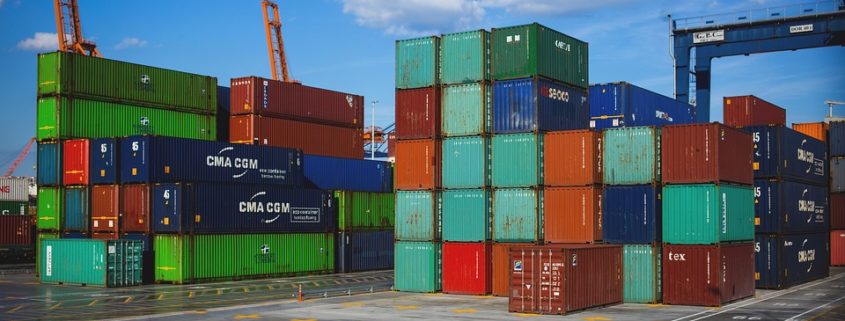The Single Window Concept
Single Window allows parties involved in trade and transport to lodge standardized information and documents with a single-entry point to fulfill all import, export, and transit–related regulatory requirements (United Nations Economic Commission for Europe Recommendation on Establishing a Single Window (Recommendation 33, ECE/TRADE/352)).
Single Window in general
Single Window is designed to overcome the complex system of data submission and regulatory control. Single Window solutions enable seamless, electronic processes between the trading community and government and between government agencies. This ensures harmonization and transparency, i.e. the creation of a level playing field with the greatest predictability possible.
Furthermore, by the improvement of the electronic processes they will be more secure, from both the perspective of an economic operator and from a governmental level. For example, the use of information and communications technologies (ICT) results in less opportunity for officers to infringe the process of decision making.
How Does It Work?
The Single Window aims to simplify information flows between the trading community and governments. It also brings meaningful gains to all parties involved in cross-border trade.
The Single Window environment includes:
- An electronic system that attempts to simplify international trade procedures for all parties;
- A facility enabling the provision of standardized information with a single body to fulfill all import, export, and transit-related regulatory requirements;
- A tool that allows businesses to submit all the data that a government requires to clear import/export goods only once;
- One “entrance”, managed by one agency that informs other appropriate agencies, and/or directs combined controls;
- An ability to analyze information and risk profile traders, facilitating faster and more predictable supply chain movements.
A Single Window environment is a practical application of trade facilitation concepts. It reduces non-tariff barriers to trade and delivers immediate benefits to all members of the trading community and governments.
Benefits
Government and trade have a significant stake in the success of the Single Window implementation. The Single Window supports the effective and efficient deployment of resources. For the government, the benefits include improved trader compliance, correct revenue yields, and the enablement of risk management tools. For traders, the benefits relate to cost-cutting through the reduction of delays, faster clearance and release, and predictable application and explanation of rules.
Single Window Program
A Single Window can take various forms and represents close cooperation between all involved departments and authorities. Single Window does not necessarily require implementation of ICT technologies. Facilitation can be greatly enhanced by identifying and adopting leading practices and processes, as well as technologies. When considering process models, it is important to acknowledge that although many businesses and trade practices are common across all countries, each country will have its own unique requirements and conditions.
EU Customs Single Window Initiative
The EU Single Window environment for customs involves stakeholders dealing with the cross-border movement of goods. The objective of the EU Single Window is to enable economic operators to electronically lodge, and only once, all the information required by customs and non-customs legislation for EU cross-border movements of goods.
Single Window – Common Veterinary Entry Document (EU SW-CVED), was initiated in 2012 and entered into production in December 2014. It is the pilot project of the EU Customs SW initiative. The aim of the EU SW- CVED project is to provide for automated validity checks of the CVED and Common Entry Document (CED) certificates submitted with customs declarations.
This project consists of interconnecting the Member States Customs Systems and the DG SANTE certificates database TRACES. This database holds the CVED and CED certificates, through the DG TAXUD IT solution.
The system is currently (September 2018) operational with nine Member States in production (Czech Republic, Ireland, Slovenia, Latvia, Bulgaria, Poland, Cyprus, Estonia and Portugal).The following Member States have expressed interest to participate in the successor of the project (called EU Customs SW–CERTEX) in the near future – France, Belgium, Spain, Lithuaniaand Luxembourg.
The European Commission engages to expand the scope of EU Customs SW–CERTEX with other digitalised EU certificates and enhanced functionalities. As a result this will facilitate and improve the harmonisation and exchange of data between authorities.
EU Customs Single Window – Certificates Exchange
By early 2017 the Member States and the Commission approved the new project, “EU Customs Single Window: Certificates exchange (CERTEX)”. The aim of the project is to accommodate new certificates’ integration and enhancement of the functionalities of the EU SW-CVED phase. This consist of adding the quantity management functionality, and the possibility to generate and transmit certificates in PDF format.
Also three new certificates are added to the project: Forest Law Enforcement, Governance and Trade (FLEGT) from DG ENV, Certificate of Organic Inspection (COI) from DG AGRI and Common Health Entry Document for Plant Protection (CHED-PP) from DG SANTE. Likewise envisaging the same functionalities as for the CVEDA, CVEDP and CED after the above-mentioned enhancement.
All three new certificates will be managed by TRACES (TRACES NT) administered by the European Commission’s DG SANTE. The project connects the EU Customs SW to TRACES/TRACES NT since the six certificates falling in scope (CVEDA, CVEDP, CED, FLEGT, COI and CHED-PP) are managed within TRACES/TRACES NT.
Looking at the perspectives of the EU Customs SW evolution, other certificates hosted on a database different than TRACES/TRACES NT will be added.
What Is A National Single Window?
Traders can submit all documents relating to trade and can access all relevant information regarding trade via a single electronic gateway (customs portal). This is called a National Single Window. The portal connects the Customs Authority with all government agencies that deal with the movement of people or goods. This includes tax, immigration, quarantine, health, transport, agriculture, fisheries, foreign affairs and the Central Bank. This system is a new and innovative approach to border processing and clearance. A lot of countries around the world are adopting a National Single Window system as it has been proven to greatly facilitate trade.
How Does A National Single Window Help Traders?
Traditionally, when traders wish to import or export goods, they have to submit the same information numerous times to different government entities. Sometimes these documents have to be submitted electronically, sometimes by paper. This is time-consuming, often costly, increases the chance of mistakes, and makes the process of trading difficult.
A National Single Window system simplifies and automates this by allowing traders to submit all import, export, and transit information required by regulatory agencies via a single electronic gateway. Paper is eliminated and the accurate and consistent information is available for traders. Also, allows traders to access all relevant trade rules, regulations, procedures, fee schedules and forms from all border management agencies through a single user-friendly website.
For more information about our SW services you can visit:




Leave a Reply
Want to join the discussion?Feel free to contribute!